Team Basil have done many, many things since my last blog, which seems days ago, but is was in fact only 48 hours. We’ve also left the Peloponnese after a month travelling around it.
My overall impression of the Peloponnese is mountains. I don’t think I have ever before travelled in such unrelentingly mountainous terrain. The coastline is stunningly beautiful, with the clearest, bluest water I have seen anywhere, other than on previous travels to the Greek islands. The people are very friendly and welcoming and wildcamping has, as promised, been very easy. I hope we can come back again one day and possibly spend even longer exploring more of the hundreds of little harbours and beaches.
Yesterday we were up with the lark and into Acrocorinth by 8.15! It was a good job because the climb up to the Frankish tower at the top in the heat of the day would have been unpleasant. Temperatures are now hovering at around 30 degrees by mid afternoon.
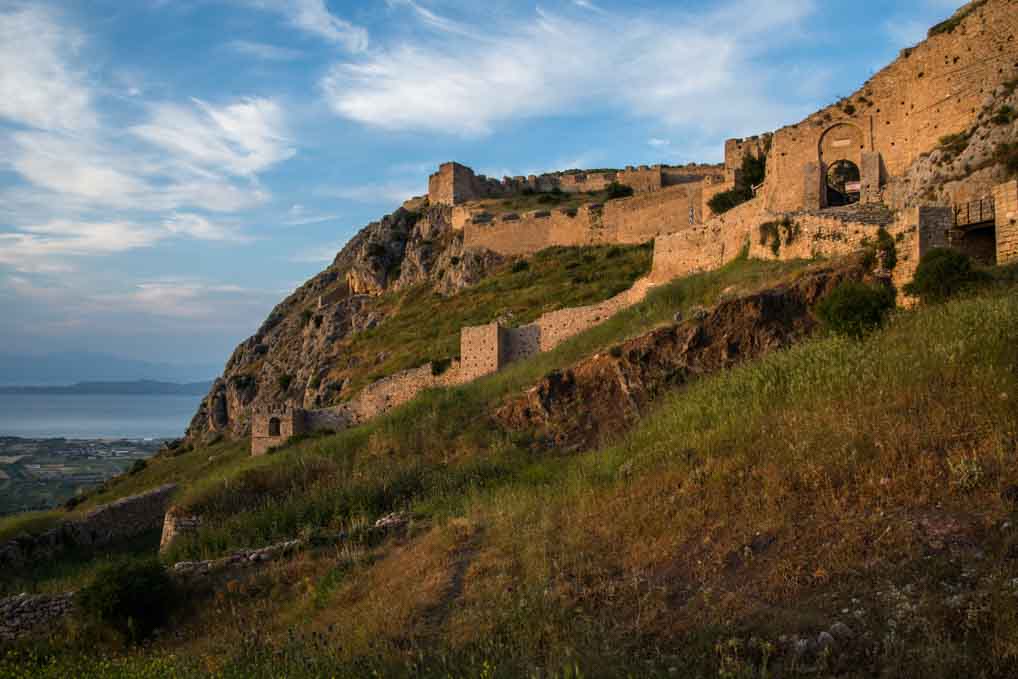
Acrocorinth in the late evening light
Acrocorinth is a huge fortification built on top of a 1,600 foot mountain in a strategic location to dominate the isthmus of Corinth, the narrow sliver of land dividing the Peloponnese from the rest of Greece. There is evidence of Greek and Roman temples at the top, but the major fortifications started with the Byzantines, who lost it during the Crusades to the Franks. It was then occupied and strengthened by the King of Naples, the Venetian, the Turks, uncle Tom Cobleigh and all, until it finally fell the Greeks in the War of Independence. You’ve heard it all before as we’ve visited other castles on the Peloponnese!
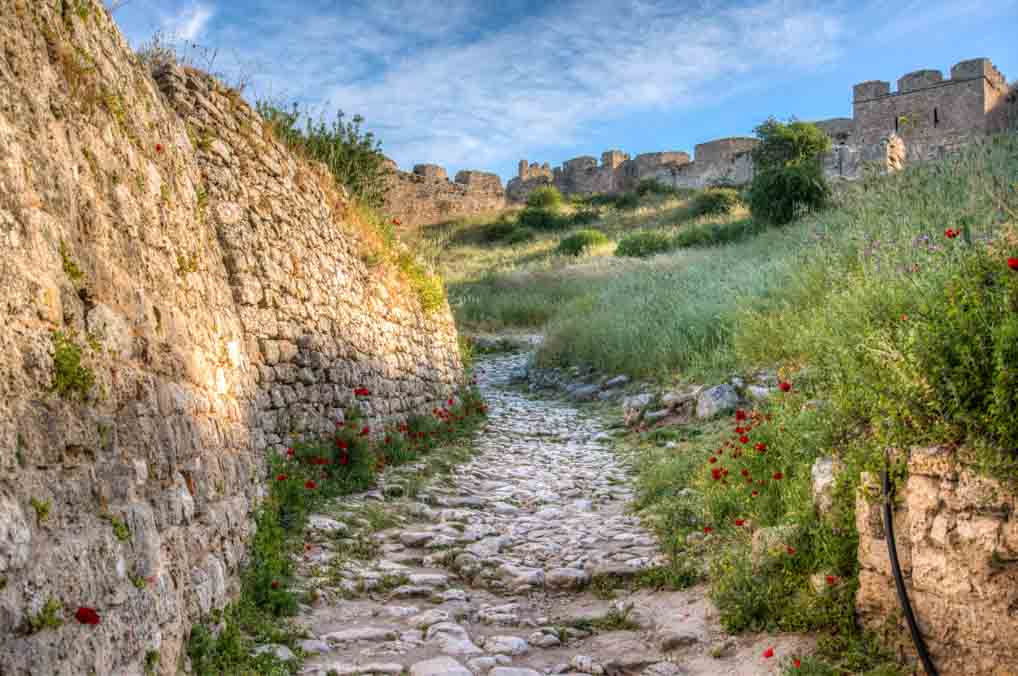
Acrocorinth
Parts of it are very complete. Most of the 2 kilometres of walls still stand and the Frankish Tower at the highest point has been completely restored. Irrespective of the history it is a beautiful place to visit at this time of year, with poppies and other flowers everywhere and stunning views over the surrounding landscape.

Acrocorinth
It was, amazingly, free to enter and the dogs were also admitted, much to their delight. We took our time to wander to the top and back, trying to avoid a few perilous drops with no railings as protection and a number of cisterns where water would have been collected in the past.
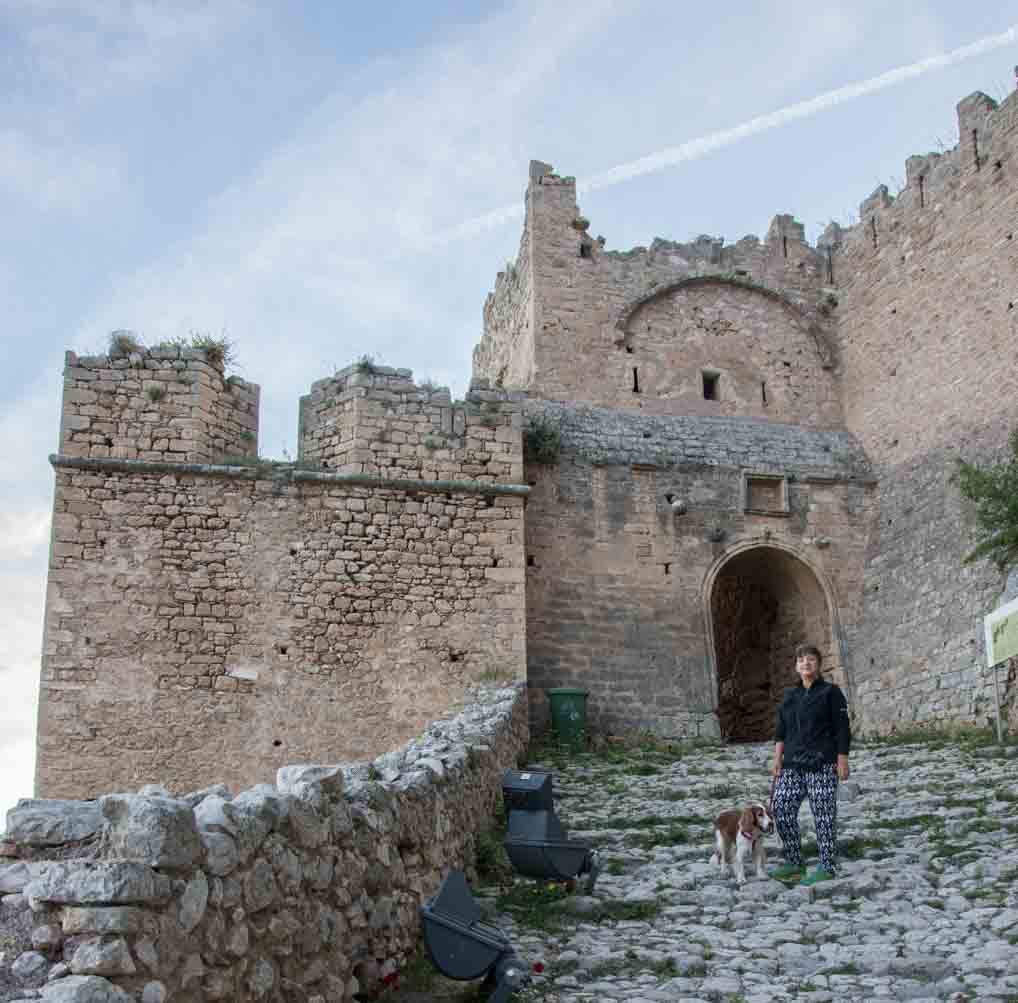
Sarah and Mabel at Acrocorinth
We virtually had the whole, immense, site to ourselves at that time in the morning.

Frankish Tower
When we had finished we pointed Basil’s nose down hill and set off for our next stop, the Corinth Canal. Luckily Basil’s fuel guage had been playing tricks the day before and there was no need to cruise downhill. The main place to view the Corinth Canal is the bridge on the old main road, either side of which is a conglomeration of tourist tat the like of which we have not seen elsewhere on the Peloponnese. We squeezed Basil in amongst a myriad of tourist coaches and walked to the middle of the bridge.
The Corinth Canal was built in 1882, 1900 years after Julius Caesar and his immediate successors, started and then abandoned the project, which now removes the need to send ships around the Peloponnese by cutting through the Isthmus of Corinth, which is only four miles across. Despite the fact that it is now too small for today’s largest ships, it is an impressive piece of engineering, cut 63 metres into the rock and arrow straight.
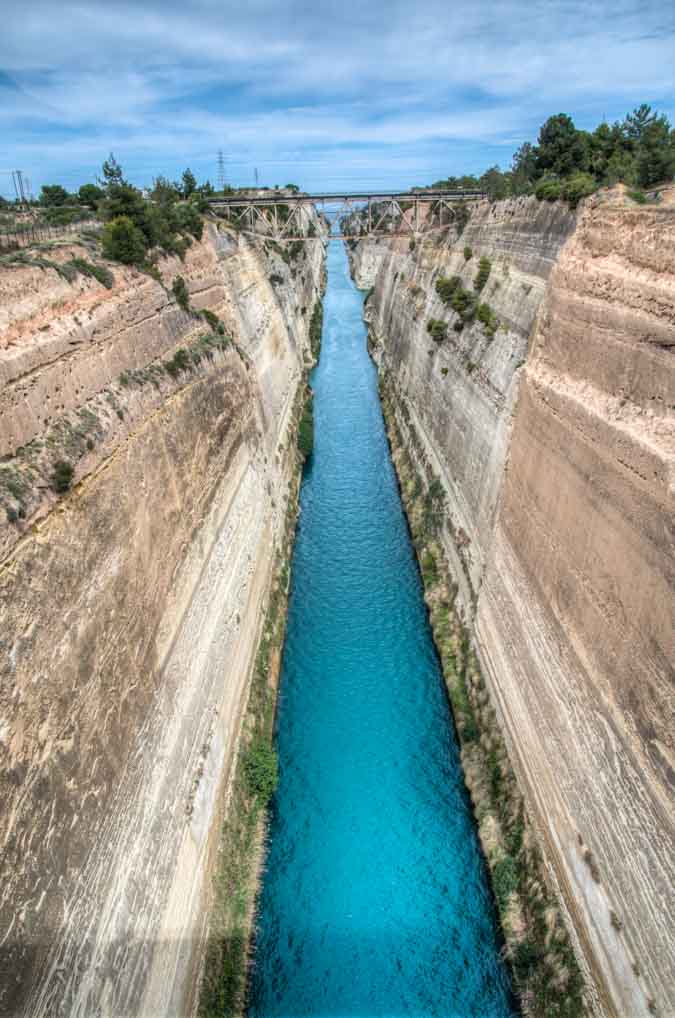
Corinth Canal
Having navigated crowds of coach trippers to get the centre and back, we duly departed Corinth and headed onto the Greek mainland. Most of the rest of the day was spent driving. First on an excellent, if expensive, Greek motorway where we managed to empty our cassette at one of the numerous WC’s, which for some reason flank the motorway with baffling regularity. A good tip for the future though with future wild camping. The rest of the day was on good national roads and uneventful, except that we passed though plenty of flat land, with large amounts of traditional arable agriculture, something virtually unseen on the Peloponnese.
We finished the day at the car park of another UNESCO World Heritage site of Osios Loukas Monastery. The main church in the complex is the only church in mainland Greece which is known with certainty to have been built in the 10th Century and is the largest of three monasteries to have survived from this period.
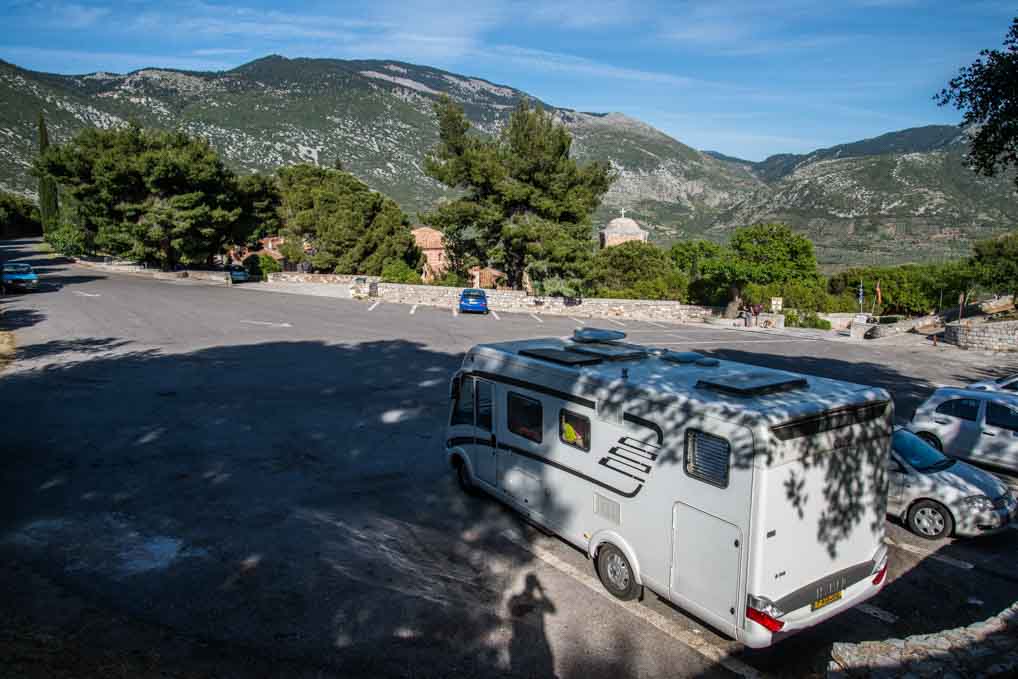
Basil’s overnight location at Osios Loukas
Our intention had been to park overnight it the carpark and then visit the monastery in the morning. However, we had only just parked up when a familiar German motorhome pulled up alongside us. It is a Hymer Duomobil, which for technical reasons which I will not go into is one of the few vehicles to provoke motorhome envy in me. It is owned by a Dutch couple who we had met previously at Camping Koroni.
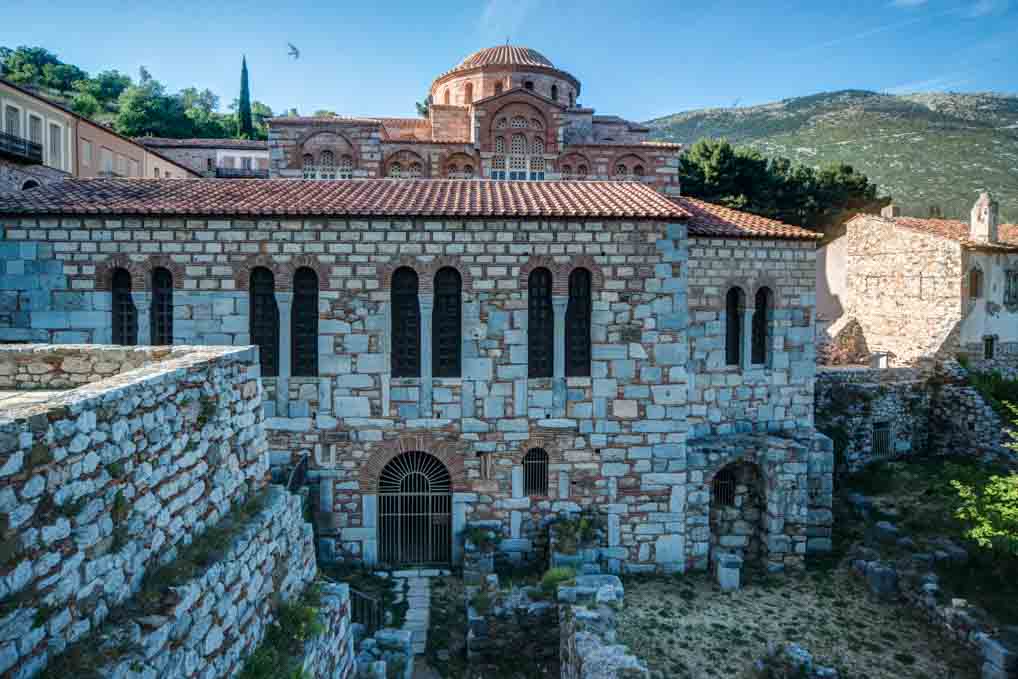
Osios Lukas
I had a discussion with the couple who said they intended to visit this evening, but I said I though it was already shut. It was 6 pm. They set off into the monastery and I consulted the Rough Guide which said it might be open until 7pm, so Sarah and I set off with the dogs in tow.

Osios Lukas
Sure enough all but a few buildings were still open and better still at this time of night it was free!! So first Sarah and then I took it in turns to look after Melek and Mabel while the other looked round the site.

Osios Lukas
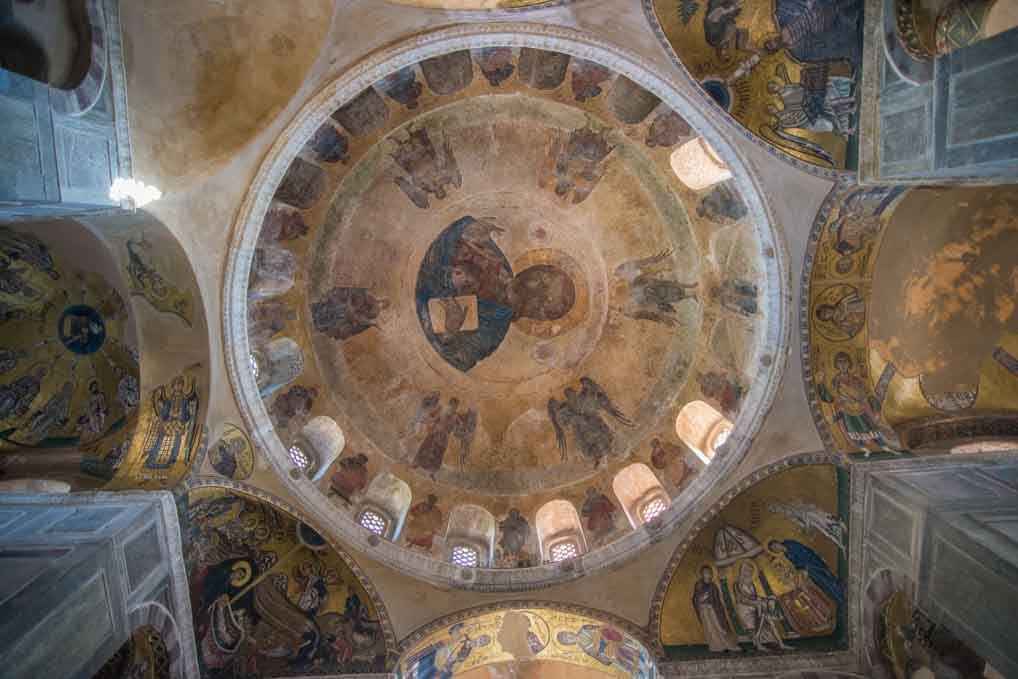
Osios Lukas
Personally, although it was beautiful, in the way that Orthodox churches are, with lovely mosaics and icons, it was otherwise not the most impressive religious building I have visited. It’s importance clearly lies in its age rather than anything outstanding artistically. It was a privileged experience however to wander around this ancient, still active, monastery on our own as the sun began to set.

Osios Lukas
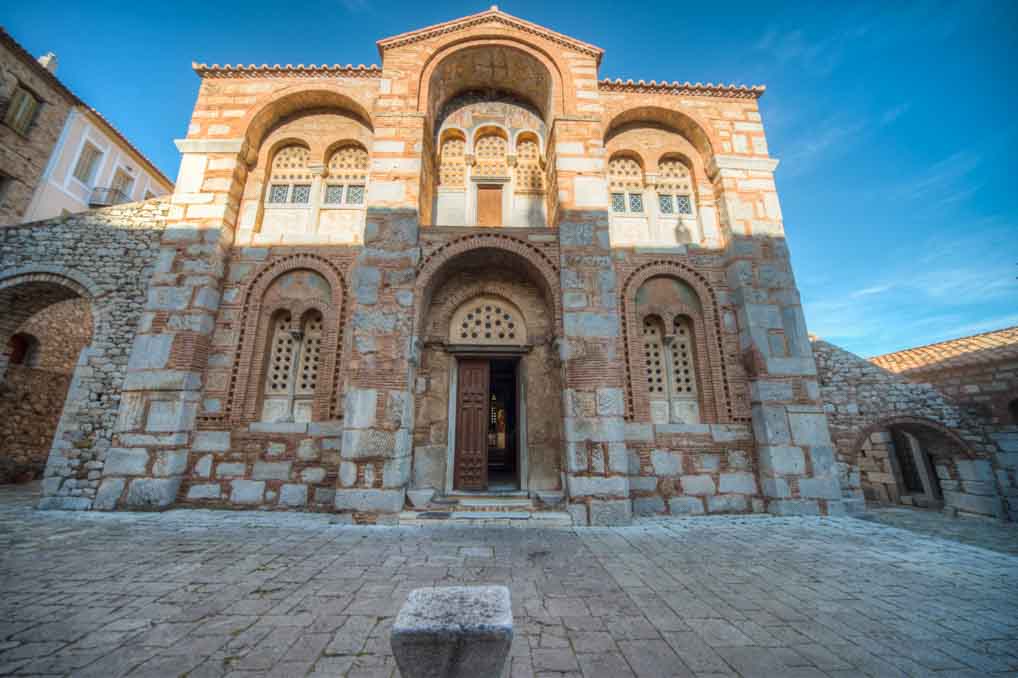
Osios Lukas
I’m afraid I have run out of time and so I will cover today’s exiting trip to Delphi in tomorrow’s blog. Suffice it to say that after two nights wildcamping we are now ensconced at the very nice Camping Chrissa, near Delphi (38.473189, 22.459111). It is excellent value at 15€ a night, with good wifi and a lovely little swimming pool which Sarah has tried out this afternoon.
